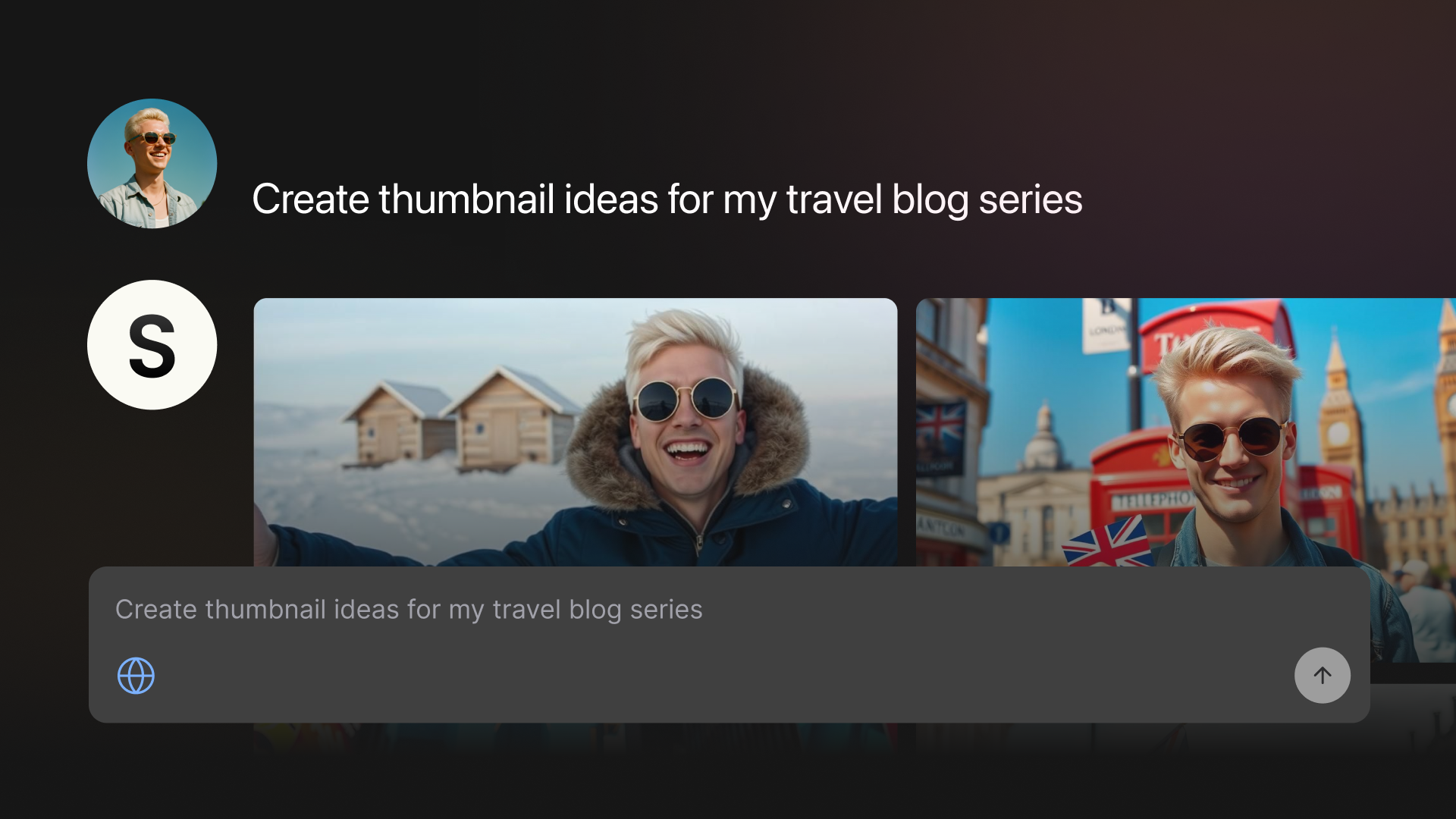Why Pro YouTubers Brainstorm at Least 10 Ideas a Day



Why Pro YouTubers Brainstorm at Least 10 Ideas a Day
“You do not rise to the level of your goals. You fall to the level of your systems.” - James Clear, habits expert and author of the bestselling book Atomic Habits
For many aspiring YouTubers, creating a hit video can feel like catching lightning in a bottle. One spark of inspiration, one stroke of genius, one well-timed trend and suddenly, you have an Outlier video. But professional YouTubers know better: success on YouTube isn't built on lucky breaks. It's built on systems.
Behind the channel of nearly every pro YouTuber is a repeatable process for developing a bank of hit video ideas. They don’t just wait for good ideas to strike. They nurture their ideas daily, deliberately increasing the number of ideas they can pull from.
So why do pro YouTubers brainstorm 10 or more video ideas a day? And what can you learn from this approach to ensure your channel stays ahead of the curve?
Let’s break it down.
The Myth of the “One Big Idea”
Ask a beginner what they need to grow on YouTube, and many will say “a viral video.” Ask a professional, and they’ll say “a system that helps me create consistently good videos.” Take Drew Binsky for example who generates hundreds of ideas only to publish a smaller portion. Drew starts with Brainstorm to enhance his ideation sessions. He explains, “I'm using [Spotter Studio] a lot for brainstorming. And then I basically have a big spreadsheet of 1,000 ideas, but I kind of condense them down using Spotter Studio to help.”
There’s a fundamental shift in mindset that happens when a creator moves from dabbling to treating YouTube like a business. Great creators don’t rely on single ideas. They rely on flows of ideas. It’s a habit, a practice, a discipline.
In Ideaflow: The Only Business Metric That Matters, Jeremy Utley and Perry Klebahn from Stanford’s d.school argue that ideation is not about having one perfect idea. Instead they suggest it's about having lots of ideas, knowing that quantity leads to quality. They write:
“Innovative organizations don’t just forgive failure—they expect plenty of it. If you aren’t failing frequently enough, it’s a sign that you need to fill your pipeline of possibilities. More ideas, more experiments, more iteration. Striking out is a natural consequence of stepping up to the plate, but if you warm the bench all day, you’ll never hit a home run. As the home runs stack up in parallel with the strikeouts, you’ll free yourself from your aversion to big swings.”
This principle is at the heart of why pro YouTubers set aggressive idea-generation goals. Ten ideas a day might sound excessive until you realize how many will never make it to production. And that’s okay. In fact, that's the point.

Ideas Are the Currency of Consistency
On YouTube, consistency isn’t just a buzzword. It’s the baseline. YouTube rewards consistent uploads. Audiences expect a cadence. Sponsors plan around release schedules. Your favorite traditional TV episode doesn’t miss an upload do they?
But none of that matters if you don’t have compelling ideas to bring to life.
A consistent posting schedule without a consistent pipeline of good ideas is like trying to run a marathon without drinking water. You might start strong, but it won’t last.
Brainstorming 10+ ideas a day ensures that creators:
- Never run dry: You’ll always have an Idea Bank to pull from when you’re low on time or inspiration.
- Find patterns: As you ideate more frequently, you start to notice recurring themes that resonate with your niche, what your audience also watches and YouTube overall.
- Discover Outliers: Some of your biggest hits will be the result of researching Outlier videos and putting your own fresh perspective on the concept.

Quantity First, Quality Later
Creators often block themselves by trying to generate great ideas. But that’s not how the best ideas flow. The best creators understand that volume precedes value. Quantity over quality of ideas.
Quantity forces your brain to stretch. When you force yourself to write down 10 ideas, even if most are “bad”, you continue. You’ll get creative. You stumble onto something new and unique.
This is the same muscle artists, comedians, entrepreneurs, and scientists use. James Altucher calls it “becoming an idea machine.” Jerry Seinfeld wrote a joke every day. Thomas Edison ran thousands of experiments before landing on a successful design.
For YouTubers, the same principle applies. If you're not regularly testing your creative range, you're not fueling yourself for the marathon of creating consistent compelling pieces for you and your audience.
The Hidden ROI of Daily Brainstorming
Time spent brainstorming is never wasted. Even if nine out of ten ideas never get filmed, the tenth might be the breakthrough. But that’s just the visible return.
Here’s what daily idea generation also gives you:
- Creative agility: You’ll be able to respond quickly to trends, news, or algorithm shifts.
- Clarity of direction: The more you brainstorm, the clearer your channel’s mission and niche becomes.
- Less burnout: A healthy ideation habit reduces the stress of having to “come up with something good” under pressure.
And the most underappreciated return? Creative confidence.
Creators who regularly ideate become less emotionally attached to single ideas. They’re less fragile in the face of poor performance. When one video flops, they know they have ten more lined up.
Building Your Ideation Habit,
If brainstorming 10 ideas a day feels impossible, start with a smaller number and build the habit. Try five ideas a day for five days.
The key is to create rituals that support consistent ideation. Here are a few to try:
- Morning Ideation Sprints: Block 5 minutes each morning to write down as many video ideas as possible without editing yourself.
- Outlier Spotting: Spend time reviewing what’s performing best in your niche. What’s popping on your channel, and why? What are other creators doing that you could draw inspiration from?
- The Title-First Approach: Instead of thinking in terms of topics, think in terms of titles. A strong title often reveals the core of a great video.
- Reverse Engineering: Look at your past hits. Why did they work? Can you make a part two, an update, a sequel, prequel, or deeper dive?
Professionalism Means Preparation
What separates a pro from a hobbyist isn’t just production quality or subscriber count. It’s mindset. Pros don’t wait for good ideas: they nurture their bank of ideas by consistently developing, refining and bringing ideas to life.
That preparation means creating an environment where ideas are constantly flowing. It means honoring the process even when it feels unproductive. It means showing up to do the creative work other creators don’t put in.
YouTubers who treat ideation like a system outperform those who rely on inspiration. Because when the moment comes to film, script, or pitch a brand, they’re ready. They’re never stuck. They always have somewhere to go.
The Closing Note
Remember to note: you will not use every idea you brainstorm. Most will never see the light of day. But that's not failure, that's fertilizer for future ideas.
Every “bad” idea sharpens your sense of what a good one looks like. Every session builds your creative muscle. Every day you ideate, you’re stacking the deck in your favor.
So write your 10 ideas today. Most won’t matter. But one just might change your channel.
And when you build a system around ideation, you’ll never run out of what to make next. And most importantly the ideas you do bring to life are more likely to hit you and your audience.






.png)